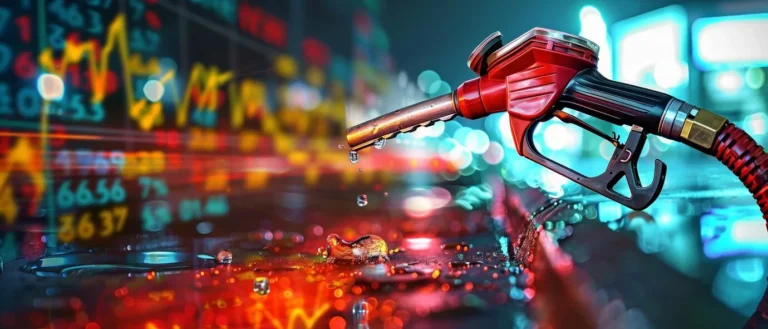;In the world of high-performance engines and extreme motorsports, one name stands out as a game-changer: nitro fuel’s. Constituting an essential component of nitro fuel’s this substance is widely known for its ability to produce a powerful and highly efficient combustion in model car racing, top-fuel drag racing and many other types of racing. But what is nitro fuel’s and why does it possess such great strength? In this article, we’ll go through the scientific background, history, and uses of nitro fuel to explain why it has become so popular.
What is Nitro Fuel?
Nitro fuel’s or commonly known as nitromethane is a special type of fuel that is used in racing cars. Its chemical composition is relatively simple: Nitromethane is a compound that is both a solvent and a fuel; its chemical formula is CH3NO2. Nitro fuel’s is normally a blend of nitromethane and a small percentage of methanol, which is a type of alcohol, and at times other chemicals that can improve its performance.
The secret behind nitro fuel’s high power output is its capacity to transport more oxygen per volume of fuel than ordinary gasoline. This means that there is more oxygen to burn the fuel hence a better combustion process and therefore more energy is produced. In other words, nitro fuel’s helps engines to combust more fuel at a faster rate resulting in more horsepower and speed.
The Science of Nitro Fuel
Nitro fuel is actually a very interesting substance in terms of chemistry. The characteristics of nitro fuel’s are due to the fact that the nitromethane molecule includes both carbon and nitrogen atoms. Nitromethane contains nitrogen-oxygen bonds. It combusts, energy is also released from these bonds which are more energetic than carbon-hydrogen bonds.
Another interesting fact that can be mentioned regarding nitro fuel’s is that it produces oxygen during the combustion process. For instance, in a standard fuel such as gasoline, the oxygen that is required for the combustion process is obtained from the air. But nitro fuel’s has its own oxygen and therefore engines can combust more fuel than is normal. This leads to an increase in power output since the engine is able to produce more energy from the same amount of fuel.
Furthermore, nitro fuel is also hotter than gasoline or methanol alone and this implies that the engines require to be tuned or built to withstand the heat and pressure. This is why nitro-fueled engines are usually protected by high-strength metals and cooling systems of the latest generation.
Historical Context and Development
Nitro fuel has been in use for a long time starting from the early twentieth century. It was first used during the First World War as a component of gasoline for aircraft fuel, to improve the efficiency of aircraft engines. The use of nitro fuel for motorsports was realized after the war and it was introduced into racing.
Nitro fuel was widely used in the drag racing in the 1950s and the 1960s. The nitro fueled top-fuel dragsters was the most significant change. That was brought about in the sport as cars were able to reach higher speeds and acceleration. This period also witnessed the appearance of such legends as Don Garlits and Shirley Muldowney. It expanded the capabilities of nitro fuel’s to the utmost.
Nitro fuel is still widely used in today’s racing categories such as model car racing. Where high-speed remote-controlled cars are fueled by nitro, top-fuel and funny car classes in drag racing. Its continued use in these disciplines is evidence of the performance benefits and the never ending pursuit of speed and power.
Applications and Impact
Nitro fuel’s most famous use is in drag racing where it is used in top-fuel dragsters and funny cars. These vehicles are capable of reaching over 330 miles per hour in a few seconds with a lot of help from the nitro fuel. The power produced by these engines is so great that it becomes difficult to manage. The heat and pressure and therefore, it calls for protective gears and facilities.
Besides drag racing, nitro fuel is used in other categories of motorsports such as remote-controlled car racing. The nitro fuel used in the Custom RC Cars enables the enthusiasts to enjoy high performance racing at a reduced scale with same speeds and acceleration.
The effect of nitro fuel’s is not limited to racing only. It has led to improvements in the engine technology and material science as the engineers and scientists try to come up with engines. It can handle the forces resulting from nitro fuel’s combustion. This continuing research has resulted in changes to engine designs, cooling systems and fuel injection systems. That are advantageous for racing cars and consumer automobiles.
Challenges and Controversies
However, like any other fuel, nitro fuel’s is not without its problems and issues. Another disadvantage of nitro-fueled engines is that they produce high temperatures and pressures. It cause engine parts to wear out quickly and thus require frequent replacements. Also, the effects of nitro fuel’s combustion on the environment are negative. This fuel is characterized by a higher combustion of nitrogen oxides and other pollutants compared to ordinary fuels.
Some of these problems are still being worked on, and science is more and more trying to find ways. It making better fuels and better ways of burning them. Although nitro fuel’s is still used in high-performance racing. The industry is always looking for ways to improve performance while at the same time being environmentally friendly.
Conclusion
Nitro fuel’s is the ultimate in racing technology and provides the most power and speed of any type of fuel. The fact that it has special chemical characteristics, has been used in the past. It is currently used in different types of motorsports makes. It a very vital component in the racing world. Thus, nitro fuel’s will undoubtedly remain a key figure in the further development of motorsports technology. The demand for speed and performance remains unquenchable. Whether you are a professional racer or just a fan of the race, the knowledge of what stands behind nitro fuel’s gives. A whole new level of enjoyment from the speed and the race itself.

